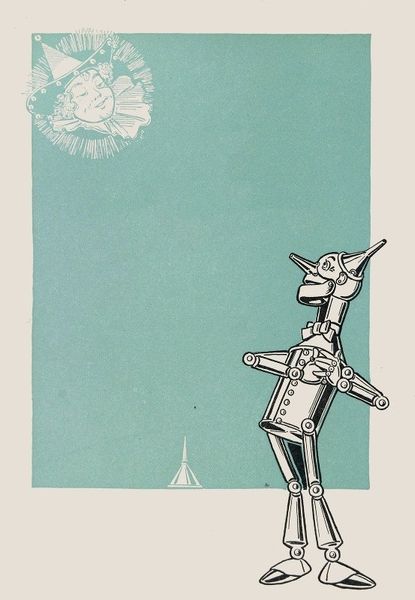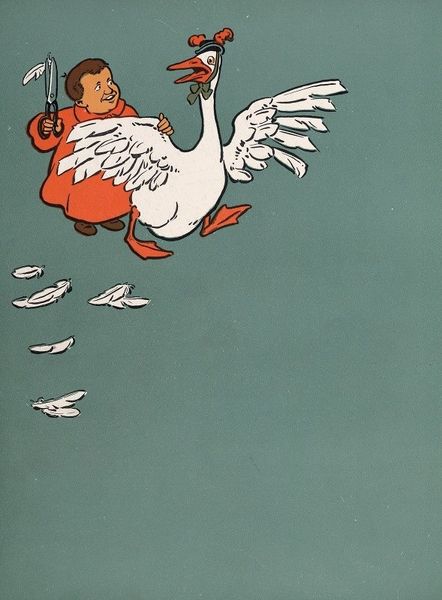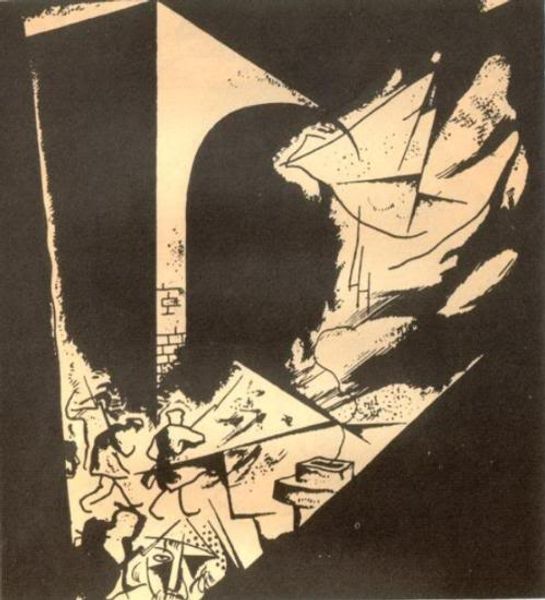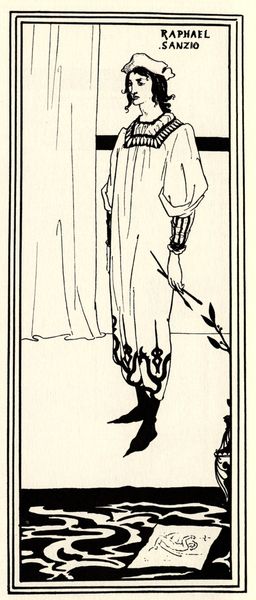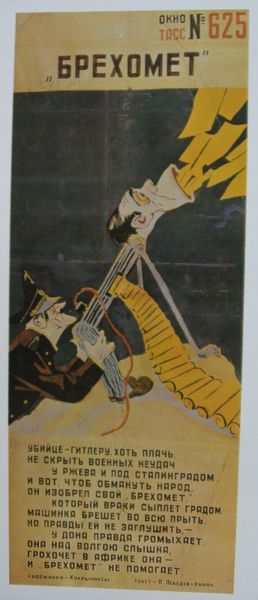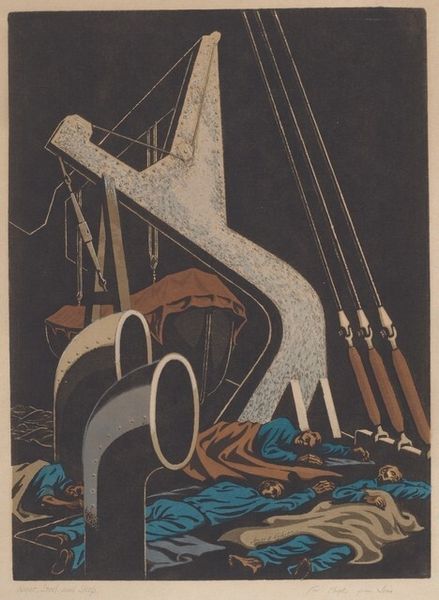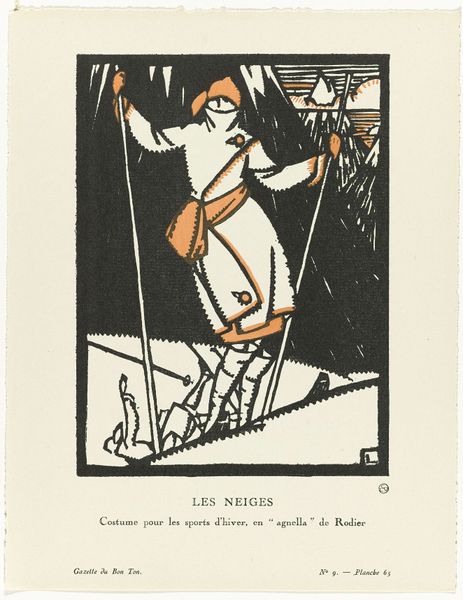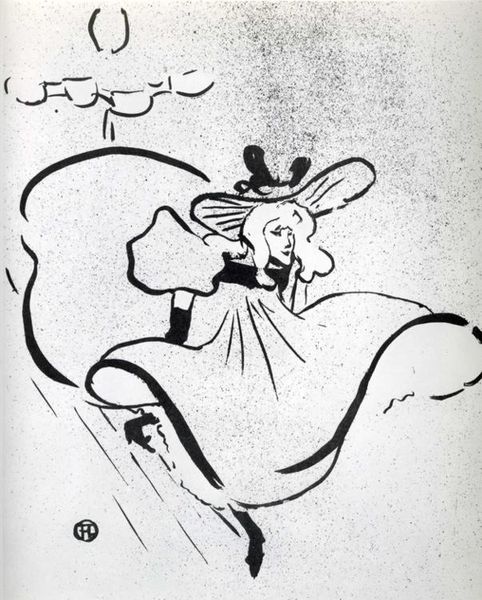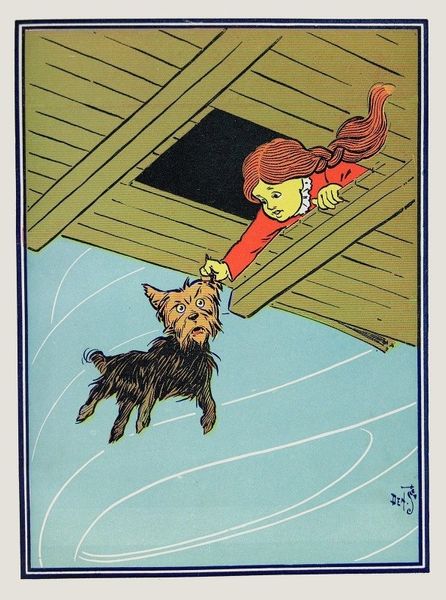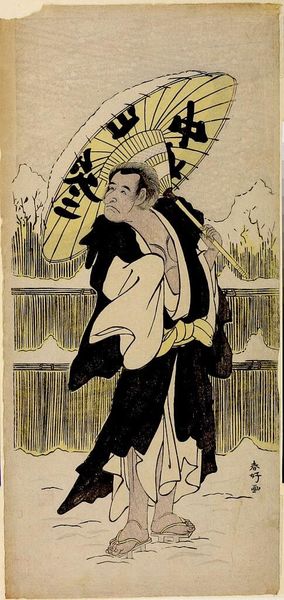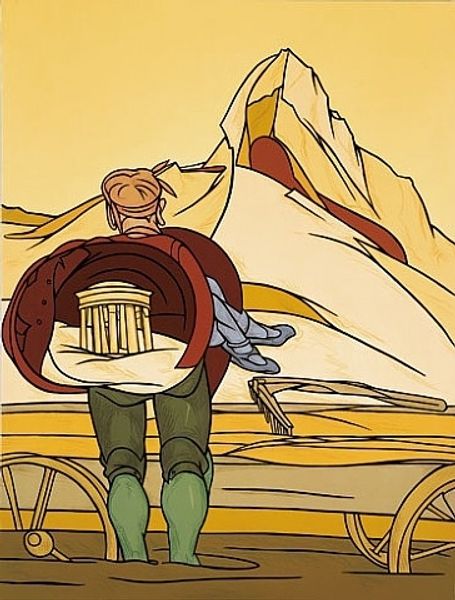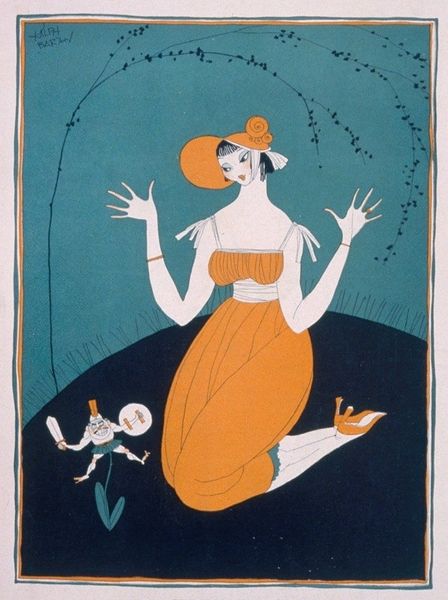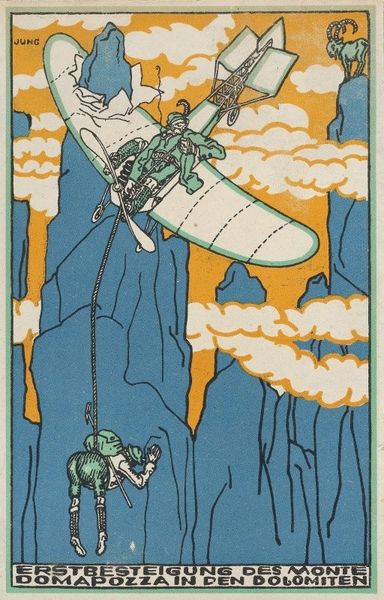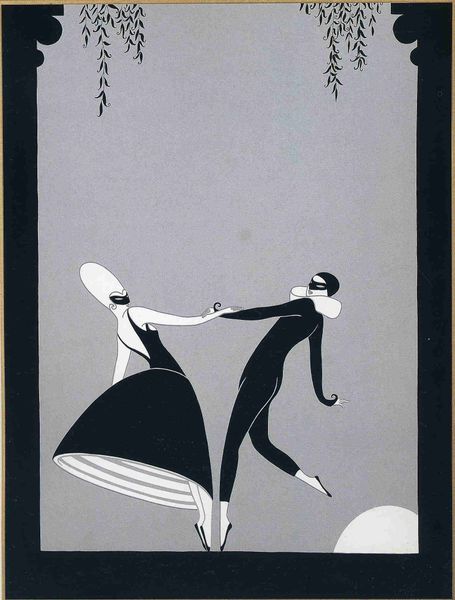
Copyright: Valerio Adami,Fair Use
Editor: This is Valerio Adami’s “Blue Danube,” painted in 1984 using acrylic paint. It’s rather striking! The color palette is limited, creating this kind of cartoonish and slightly unsettling feeling. I’m fascinated by the heavy outlines. What do you see in this piece? Curator: Note the almost aggressive simplicity in form. Observe the juxtaposition of flattened planes against the illusion of depth suggested by the boat's perspective. Consider, too, how Adami uses line – both to define shapes and to isolate them. The very absence of blending or traditional shading is deliberate. What does the color scheme evoke? Editor: Well, the blues and greens are calming, like the sea... But the black backdrop, that thin crescent moon, and then the somewhat caricatured figure – they add a layer of unease. The flat color application, especially, clashes with any illusion of depth. Is Adami playing with our expectations of representation? Curator: Precisely. Adami’s works, frequently described as “Pop Art,” resist easy categorization. Focus on the internal logic. The formal elements create a system where surface and depth negotiate with representation and abstraction. How does the artist guide your eye across the composition? Editor: I notice that the green pole creates a sharp diagonal, drawing the eye upwards towards the face, but it also intersects with the dark background, creating a stark contrast. Everything seems carefully considered in terms of its visual impact, a bit staged, I think! Curator: The emphasis is less on emotional expression and more on the interplay of form. One appreciates not the symbolic resonance, but rather the construction of a self-enclosed system, and ultimately questions the nature of pictorial space itself. Editor: This exercise has given me a greater understanding of how the formal structure and the very conscious use of simplified form and colour contribute to this artist's very specific approach to representation and construction of an image. Curator: Indeed, it invites one to explore and challenge conventional representational aesthetics by dissecting their foundational structures.
Comments
No comments
Be the first to comment and join the conversation on the ultimate creative platform.
